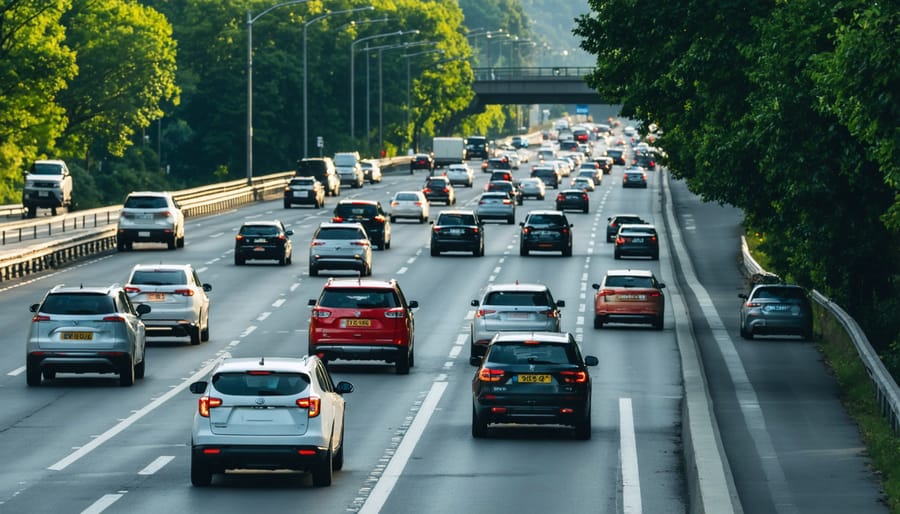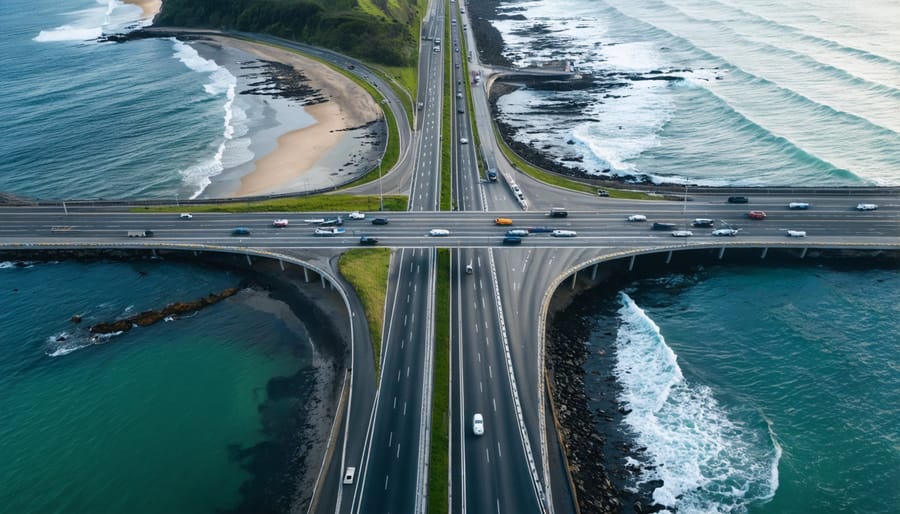As Australians grapple with climate-conscious travel choices, the carbon footprint battle between air travel and driving presents a complex challenge that hits close to home. A Sydney-to-Melbourne journey by plane generates roughly 115kg of CO2 per passenger, while the same trip by car produces about 200kg – but these numbers tell only part of the story.
The altitude at which aircraft emissions are released, coupled with non-CO2 effects like contrails and nitrogen oxides, can multiply their climate impact by up to three times compared to ground-level emissions. Yet driving’s environmental impact varies dramatically based on factors like vehicle efficiency, number of passengers, and route selection – making it possible for a fully occupied electric vehicle to outperform air travel on shorter routes.
For environmentally conscious travellers, this comparison isn’t just about numbers – it’s about making informed choices that align with our commitment to protecting Australia’s unique environment. Whether planning a business trip to Brisbane or a family holiday to the Gold Coast, understanding the true environmental cost of each transport option empowers us to make decisions that balance practical needs with ecological responsibility.
This comprehensive analysis will help you navigate the complexities of sustainable travel choices, providing clear data and practical solutions for reducing your journey’s carbon footprint.
Understanding Carbon Emissions in Transportation
How We Measure Transport Emissions
When comparing transport emissions, we use several key metrics to ensure accurate calculations. The most common measure is CO2-equivalent (CO2e) per passenger kilometre, which accounts for both carbon dioxide and other greenhouse gases released during travel. For cars, we factor in fuel efficiency, occupancy rates, and the type of fuel used, while for flights, we consider factors like takeoff, cruising altitude, and load factors.
In the Australian context, our calculations typically use data from the National Greenhouse Accounts Factors, which provides standardised emission factors for different transport modes. For air travel, we include the impact of radiative forcing – the additional warming effect that occurs when emissions are released at high altitudes.
A unique consideration for Australian transport emissions is our vast distances between major cities. When measuring long-haul journeys, we account for the full journey cycle, including getting to and from airports or rest stops for road trips. This helps provide a more complete picture of the actual emissions impact of different travel choices in our unique geographical context.

Air Travel’s Carbon Footprint
Short-Haul vs Long-Haul Flights
When comparing flight emissions in Australia, the distance makes a significant difference. Short-haul flights, like Sydney to Melbourne or Brisbane to Gold Coast, actually produce more emissions per kilometre than longer routes such as Sydney to Perth or Melbourne to Singapore. This might seem counterintuitive, but there’s a simple explanation: take-off and landing consume the most fuel, making shorter flights less efficient overall.
For example, a Sydney to Melbourne flight (about 850km) generates approximately 0.17 tonnes of CO2 per passenger, while a Sydney to Perth flight (around 3,300km) produces about 0.35 tonnes. When you break this down per kilometre, the shorter route creates nearly twice the emissions. This difference becomes particularly important when planning multiple short trips versus one longer journey.
For frequent travellers between major cities, this information can help make more environmentally conscious choices. Consider that four Sydney-Melbourne return flights produce similar emissions to one return trip to Singapore. While it’s not always possible to avoid short-haul flights, understanding these differences helps us make better travel decisions and plan how to offset air travel emissions.
Many Australian businesses are now reconsidering their travel policies, combining multiple short trips into single journeys or opting for virtual meetings when possible. This not only reduces their carbon footprint but often proves more cost-effective and time-efficient.

Driving Emissions in Context
Vehicle Type Impact
The choice of vehicle significantly influences your travel-related carbon footprint. Traditional petrol vehicles typically emit between 120-200g of CO2 per passenger kilometre, depending on the model and fuel efficiency. However, the emergence of energy efficient vehicles has transformed the automotive landscape in Australia.
Hybrid vehicles offer a middle-ground solution, producing roughly half the emissions of conventional petrol cars. These popular options among Aussie drivers combine the reliability of petrol engines with improved fuel efficiency, typically emitting 85-105g CO2 per passenger kilometre.
Electric vehicles represent the most environmentally friendly option, especially when charged using renewable energy. In Australia’s evolving energy landscape, EVs powered by the grid currently produce indirect emissions of approximately 40-60g CO2 per passenger kilometre. This figure continues to improve as our national energy mix incorporates more renewable sources.
For regional travel between major cities like Sydney and Melbourne, a fully-occupied electric vehicle can produce up to 90% fewer emissions than equivalent petrol vehicle journeys, making it a compelling choice for environmentally conscious travellers.

Making the Smart Choice
The Tipping Point
When comparing air travel and driving emissions, there’s a critical distance where flying becomes the more carbon-efficient choice – we call this the tipping point. For most Australian journeys, this threshold typically occurs between 500 and 800 kilometres, depending on your vehicle type and number of passengers.
For example, a solo driver travelling from Sydney to Brisbane (about 900km) in a standard petrol car would generate more emissions than taking a direct flight. However, if four people share the car journey, driving becomes the greener option. The calculations become even more favourable for driving when using fuel-efficient or electric vehicles.
The tipping point shifts based on several factors: the type of aircraft, passenger load, vehicle fuel efficiency, and number of travellers. Modern aircraft are increasingly fuel-efficient, particularly on longer routes where they reach optimal cruising altitude. For shorter trips, like Sydney to Canberra (290km), driving typically produces fewer emissions per passenger, especially with multiple occupants.
Consider these distances when planning your next interstate journey – the environmental choice might be clearer than you think.
When it comes to choosing between flying and driving in Australia, the environmental impact depends largely on your specific journey and circumstances. For shorter interstate trips, like Melbourne to Sydney, driving with multiple passengers can be the greener choice, producing up to 40% fewer emissions than flying. However, for longer journeys across our vast continent, air travel often becomes the more carbon-efficient option, especially when travelling solo.
To make your travel more sustainable, consider these practical steps: opt for fuel-efficient vehicles or electric cars when driving, choose direct flights when flying, and always try to travel with others to maximise efficiency. Remember, the most environmentally friendly choice isn’t always about the mode of transport – it’s about making informed decisions based on your specific situation and taking steps to offset your impact through local environmental initiatives. By being mindful of these factors, we can all contribute to reducing our travel carbon footprint while staying connected across our beautiful country.
